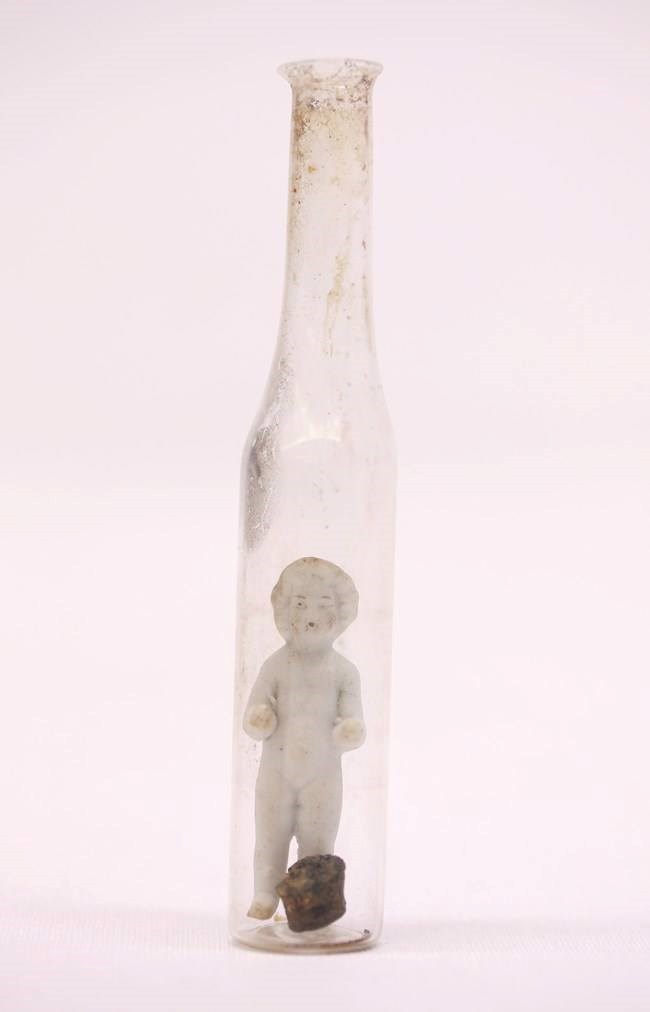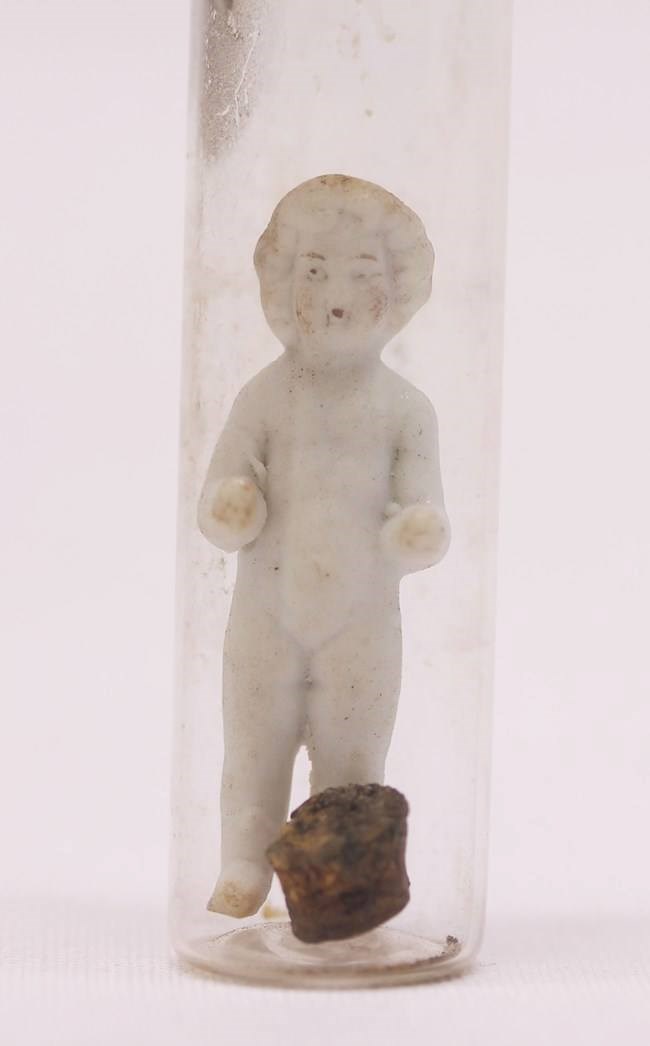Part of a series of articles titled Curious Collections of Fort Stanwix, The 19th & 20th Centuries.
Previous: Captain Basil Hall Chamber Pot
Next: Children's Toys
Article

NPS Photo

NPS Photo
This doll was excavated during the 1970s while park archeologists were uncovering the footprint of the original Fort Stanwix. It is from a privy in use from about 1870 to as late as 1910 that was associated with a home occupied in the 19th c. by Patrick Martin, a boarding stable owner. We currently do not know much about Patrick Martin or any other occupants of the home. One of the most intriguing features is that this doll was manufactured in a glass vial. While there other examples of these glass bottle dolls, this form of “Frozen Charlotte” is relatively rare. Furthermore, we are unsure of how this doll was meant to be used. Was the vial meant to be broken to reveal the doll? Or were these collectibles to be displayed with the doll still in the bottle? Were the small Frozen Charlotte dolls in the collection once encased in glass bottles like this object?
Hanson, Lee. (1974). Outhouses in Rome, New York. Council for Northeast Historical Archaeology, Spring 1974, pp: 30-43.
Mills, Ralph. (2015). “Material Culture in Miniature: The Historical Archaeology of Nineteenth Century Miniature Objects.” In The Importance of British Material Culture to Historical Archaeologies of the Nineteenth Century, edited by Alasdair Brooks. The Society for Historical Archaeology, pp: 243-273
Part of a series of articles titled Curious Collections of Fort Stanwix, The 19th & 20th Centuries.
Previous: Captain Basil Hall Chamber Pot
Next: Children's Toys
Last updated: October 1, 2022